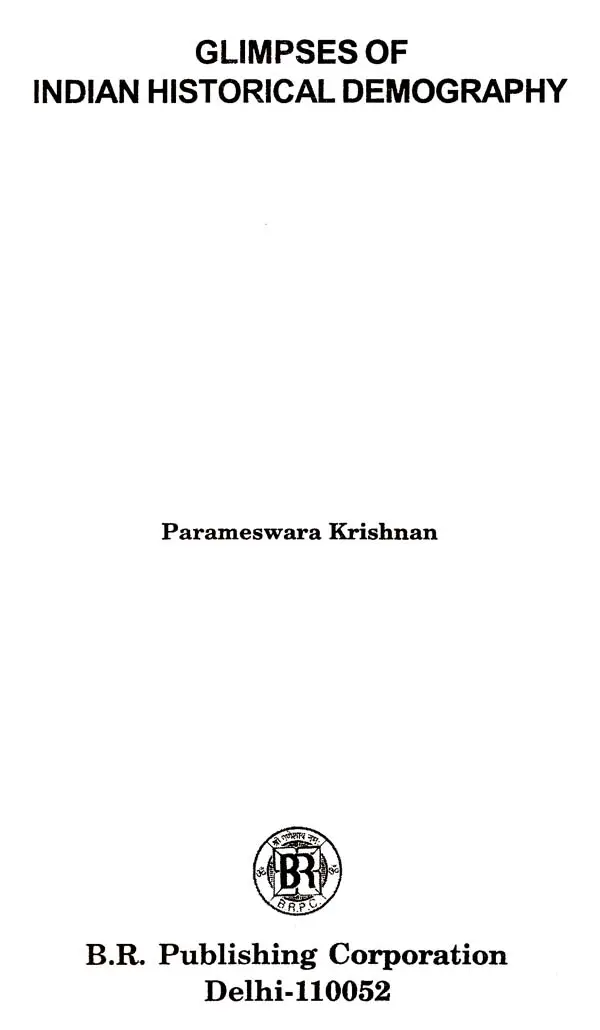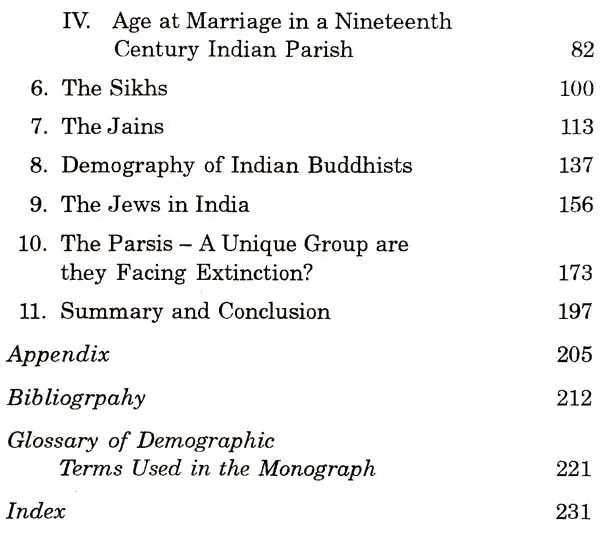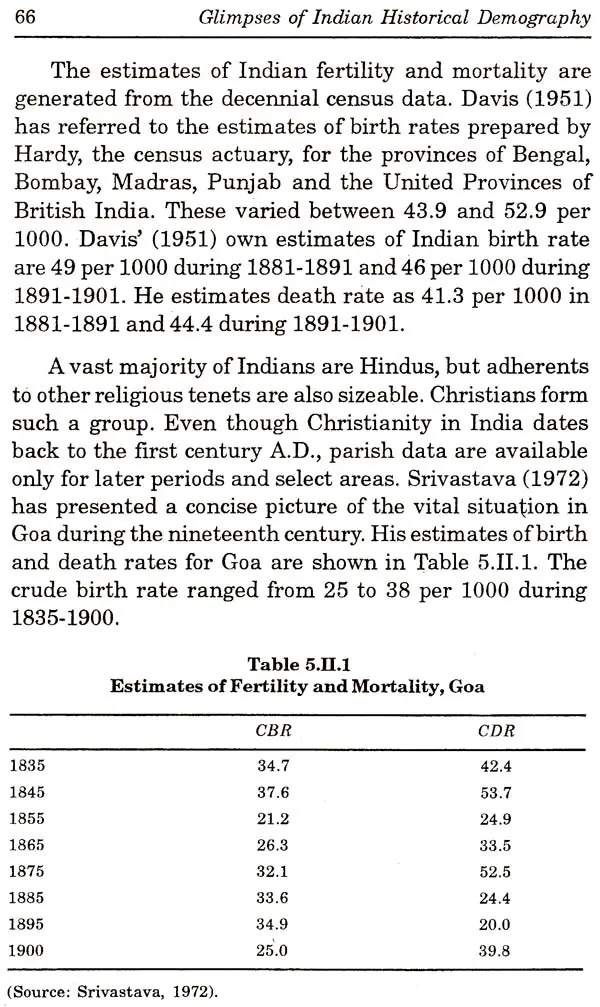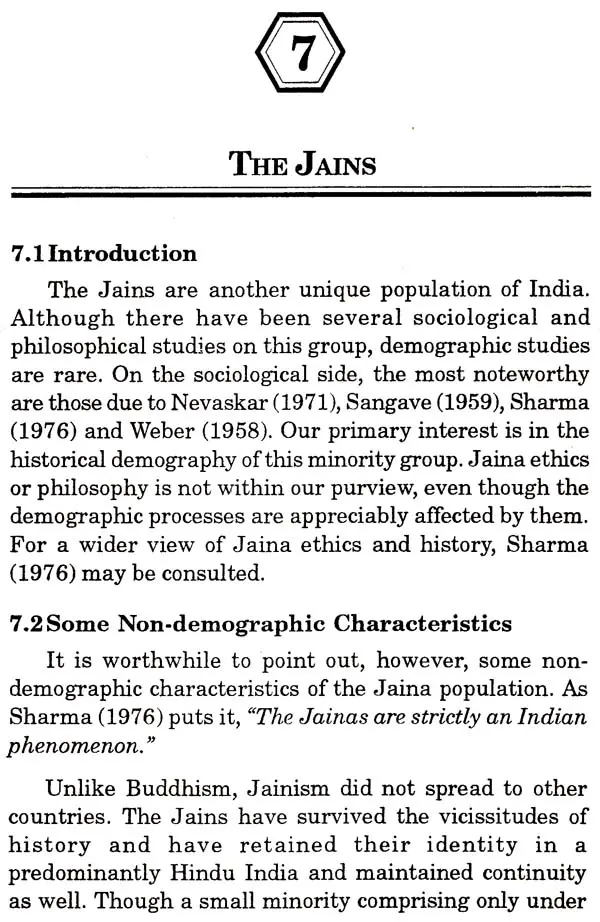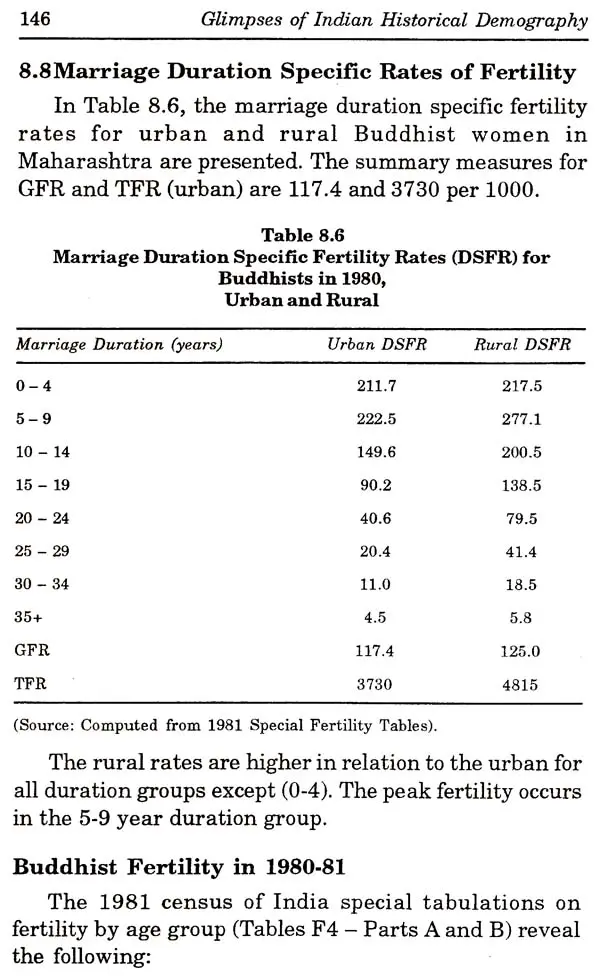
Glimpses of Indian Historical Demography
Book Specification
| Item Code: | UAK965 |
| Author: | Parameswara Krishnan |
| Publisher: | B.R. Publishing Corporation |
| Language: | English |
| Edition: | 2010 |
| ISBN: | 8176466387 |
| Pages: | 254 |
| Cover: | HARDCOVER |
| Other Details | 9.00 X 6.00 inch |
| Weight | 440 gm |
Book Description
Historical demographic studies on India's population are a rare research enterprise in view of paucity of data. Unlike western populations that are almost wholly Christian with parish registers, India's teeming millions profess several religious faiths that have no parishes, or parish registers.
Censuses provide demographic data for doing India's demographic history. India has a history of a century of census taking from 1891 to 2001.The book presents a historical demographic analysis of the major religious groups in India. Wherever possible, the analysis has been supplemented with information from other sources. It is seen that India's population is undergoing a slow demographic modernization during the course of the 20th century. A few reasons have been advanced to explain the slowness of demographic change in India. The Book will be of great interest to researchers in historical population studies and social change in developing countries.
Parameswara Krishnan is Professor Emeritus of Sociology, University of Alberta. He is currently Professor of Population Studies at the University of Botswana, Faculty of Social Sciences, Gaborone, Botswana in Southern Africa.
Historical Demography, mainly developed in the latter half of the 20th century, involves the application of demographic techniques to historical source materials, such as censuses and vital statistics, for more recent periods, (e.g., since 1850, in Europe), and Parish registers and the like for earlier periods. Information in Parish Registers is reorganized into family histories, from which one calculates conventional demographic measures, so as to permit analyses of such things as fertility patterns, and household composition and formation.
If "historical demography" refers to analyses and explanations of any patterns in chronological records of past demographic events, almost all demographers have now and then dealt with historical demography of one population or another. But now a days, one tends to mean "having to do with remote past," as in studies such as the following: Massimo Livi-Bacci's (1971) A Century of Portuguese Fertility, (1977) A History of Italian Fertility during the Last Two Centuries, Etienne van de Walle's (1974) The Female Population of France in the Nineteenth Century, and Ron J. Lesthaeghe's (1977) The Decline of Belgian Fertility, 1800-1970.
The number delving in historical demography is generally limited. It is a rare initiative in India.. The Chair of Sociology, University of Alberta (Dr. Charles Hobart) encouraged the author to do some pioneering research on India. The author commenced his research with fragmentary data at the Cambridge Group. The colleagues in the group copiously encouraged the author, when preliminary findings were presented in a seminar. Historical demography of India may be studied from several perspectives. Paucity of data compelled the author to adopt an approach different from that of Western population scientists. Census data from 1881 through 2001 revealing the religious agglomerations were relied upon. The vital rates do differ by religious groups. It is hoped that this perspective of differentials by religion will add to India's demography.
Book's Contents and Sample Pages
